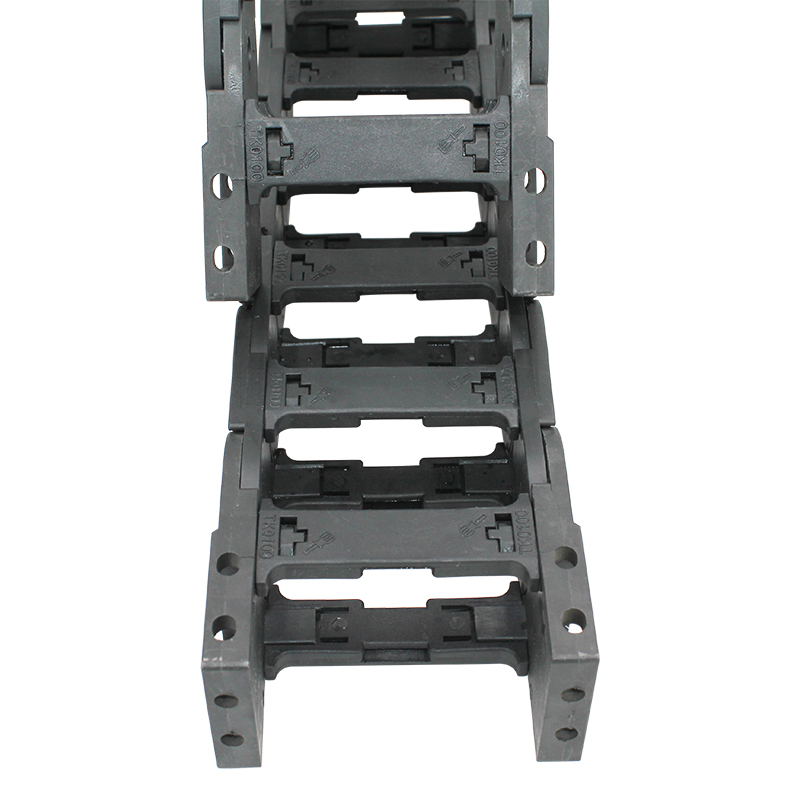Steel Cable Management Solutions for Efficient Drag Chain Systems in Industrial Applications
The Rise of Steel Cable Drag Chains in Industrial Applications
In the dynamic landscape of modern industrial machinery, the efficiency and performance of equipment are paramount. One of the integral components that contribute significantly to the smooth operation of various systems is the cable drag chain. Among the numerous materials used to fabricate these chains, steel emerges as a superior choice for its durability, strength, and adaptability. This article explores the advantages, applications, and future potential of steel cable drag chains in various industries.
What is a Steel Cable Drag Chain?
A steel cable drag chain is a mechanical component designed to guide and protect cables and hoses in dynamic applications. These chains consist of interlinked segments that create a flexible pathway through which cables can move without tangling or becoming damaged. Unlike their plastic counterparts, steel drag chains offer enhanced structural integrity and load-bearing capacity, making them ideal for heavy-duty environments.
Advantages of Steel Cable Drag Chains
1. Durability and Strength Steel is renowned for its exceptional strength-to-weight ratio. Steel drag chains can withstand significant forces and extreme conditions, including high temperatures and abrasive environments. This durability ensures a longer lifespan, reducing the need for frequent replacements and minimizing maintenance costs.
2. Protection for Cables and Hoses The primary function of drag chains is to protect cables and hoses from wear and tear caused by movement and environmental factors. Steel drag chains shield cables from mechanical stresses, preventing damage and ensuring a consistent power supply to equipment.
3. Versatility Steel cable drag chains can be used in a wide range of applications, from automated production lines and robotics to cranes and heavy machinery. Their ability to accommodate various cable types—electrical, pneumatic, and hydraulic—makes them a versatile choice across multiple sectors.
4. Safety In industrial settings, safety is critical. Steel drag chains enhance safety by preventing cable entanglement and creating organized pathways for cable routing. This organization reduces tripping hazards and potential equipment malfunctions.
5. Cost-Effectiveness Although the initial investment in steel cable drag chains may be higher than plastic alternatives, their longevity and reduced maintenance needs lead to cost savings over time. Businesses can benefit from minimal downtime and repairs, translating to increased productivity.
steel cable drag chain

Applications of Steel Cable Drag Chains
The applications for steel cable drag chains are vast and varied, reflecting the diverse needs of modern industries. Some noteworthy sectors include
- Manufacturing Automation is a cornerstone of modern manufacturing processes. Steel drag chains are extensively used to manage the cables of robotic arms, conveyors, and assembly lines, ensuring smooth operation and reliability.
- Aerospace and Automotive In the aerospace industry, the need for precision and reliability is paramount. Steel drag chains help manage the wiring and hydraulic lines of aircraft, contributing to overall safety and performance. Similarly, in automotive production, they guide cables within assembly robots and testing equipment.
- Construction and Heavy Machinery Steel drag chains are commonplace in construction equipment, such as cranes and excavators, where they protect hydraulic lines and electrical cables from harsh conditions. Their robustness ensures hydraulic systems operate efficiently, even in the toughest environments.
- Entertainment and Stage Productions In the entertainment industry, steel drag chains are used to manage cables for lighting and sound equipment. The smooth operation helped by these chains is crucial for reliable performances.
The Future of Steel Cable Drag Chains
As industries continue to evolve with technological advancements, the demand for innovative solutions will increase. The development of smart cables integrated into drag chains may represent a significant leap forward, enabling real-time monitoring of equipment performance. Moreover, advancements in manufacturing techniques may yield even more efficient designs, optimizing space and weight without compromising strength.
In conclusion, steel cable drag chains represent a vital component in the machinery and equipment of modern industries. Their durability, versatility, and cost-effectiveness make them indispensable, ensuring safe and efficient operation across a multitude of applications. As industries continue to innovate, the role of steel drag chains will undoubtedly expand, further solidifying their place in the industrial landscape.








